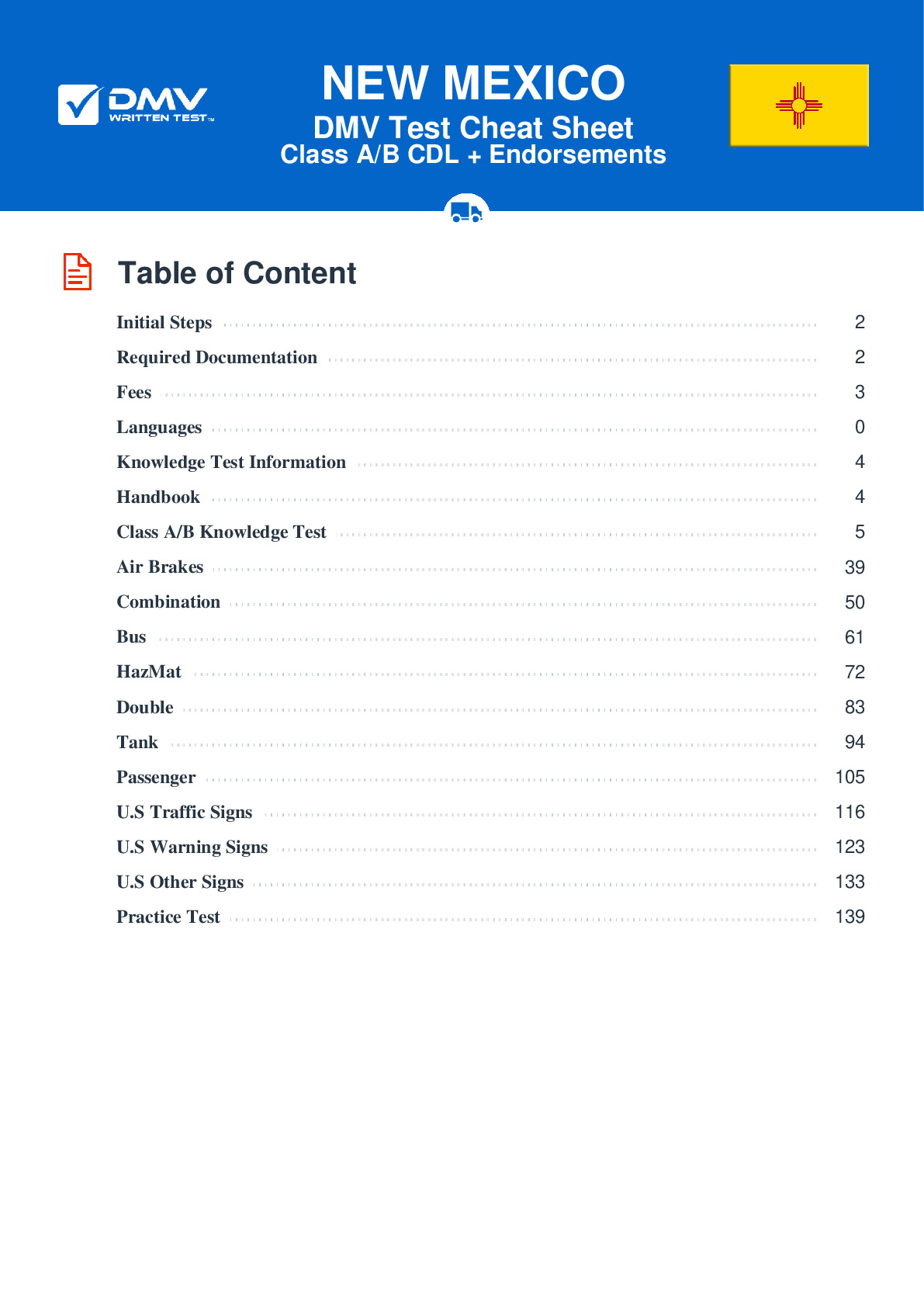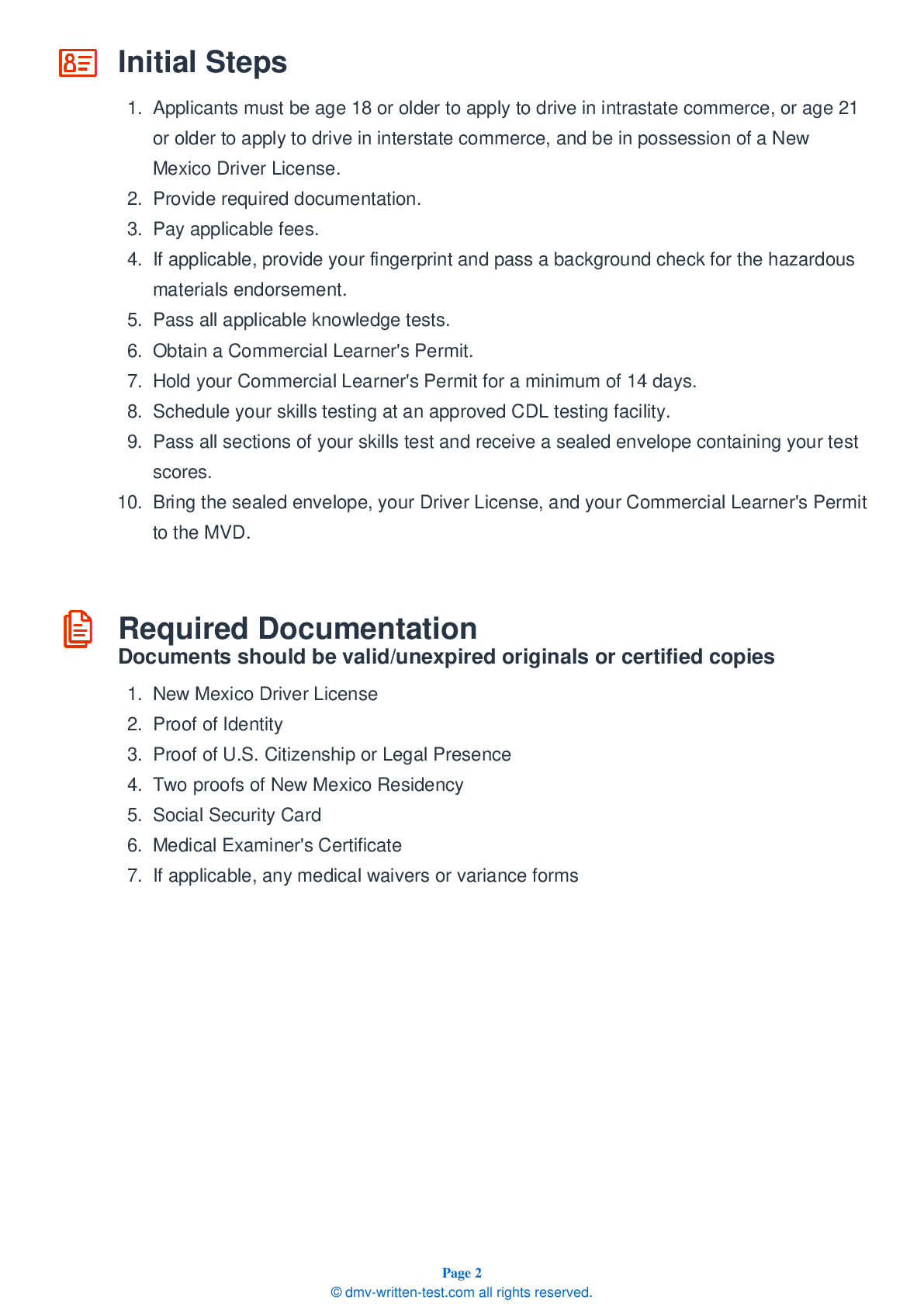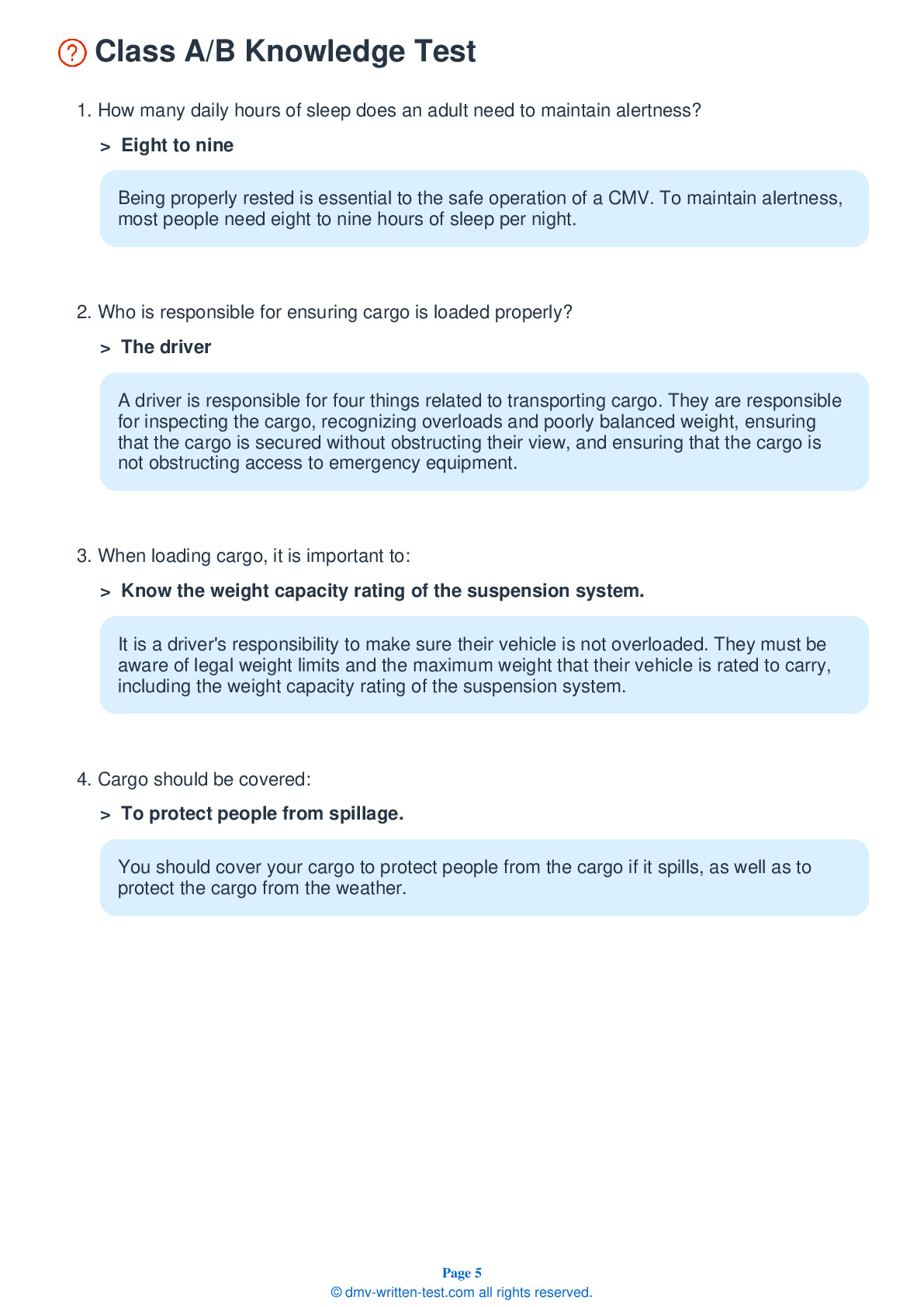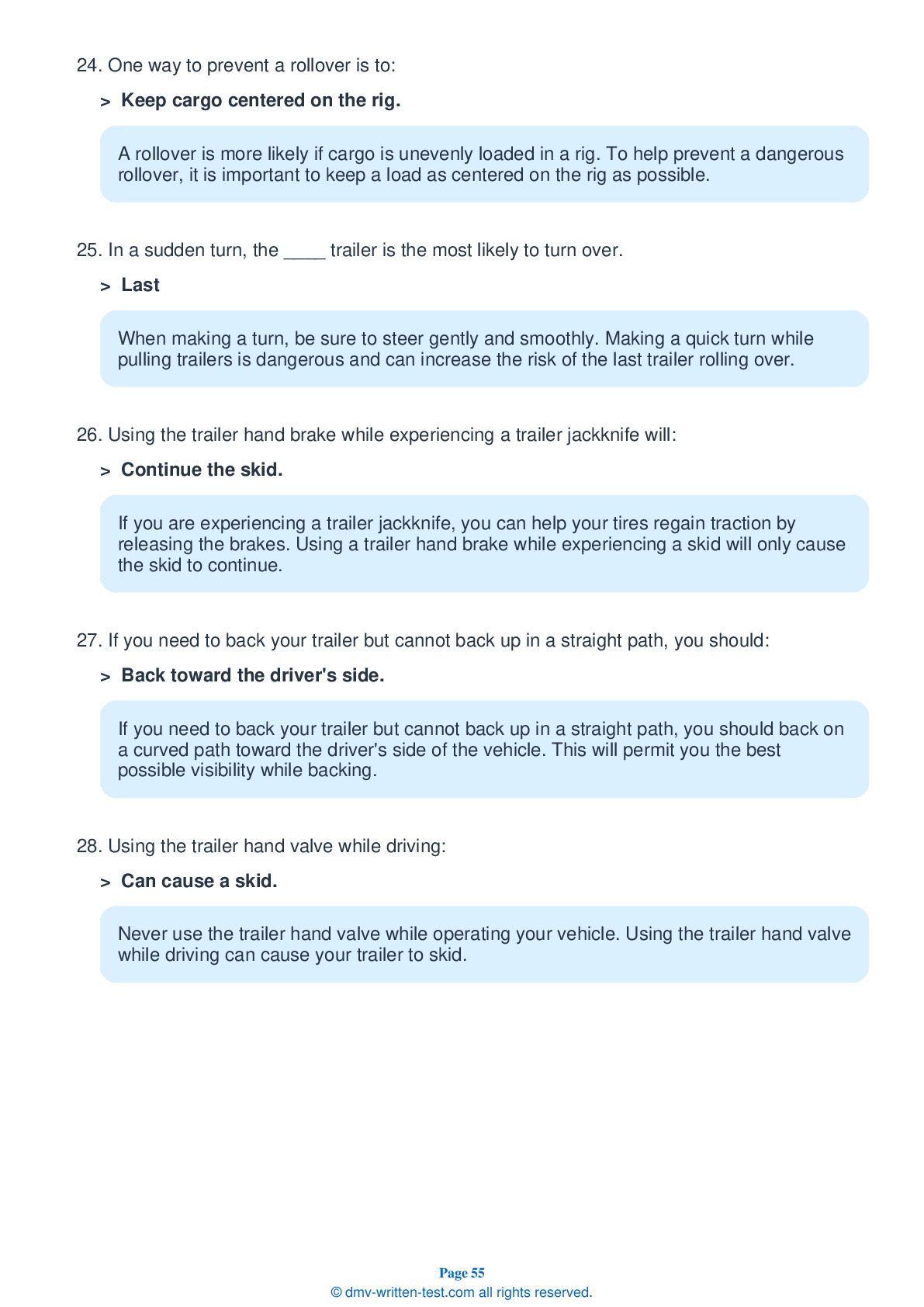Combination
All applicants who are applying for a Class A CDL should be prepared to take the Combination test. This test covers information found in Section 6 of the Commercial Driver License Manual. Section 6 provides the information needed to safely operate tractor-trailers, doubles, triples, and straight trucks with trailers. The test is made up of 20 multiple-choice questions, and applicants will have two hours to correctly answer a minimum of 16 questions. The Combination test is not a replacement for the Double/Triple endorsement test.
Number of Question
Passing Score
15. Older trailers are not equipped with spring brakes. This means that if the air supply for a vehicle's air braking system leaks away:
Explanation
Older trailers do not have spring brakes. This means that if the air supply in an older trailer's air tank has leaked away, there will be no working brakes connected to the trailer and its wheels will turn freely.
16. The trailer hand valve should not be used while you are driving because:
Explanation
Never use the trailer hand valve while operating your vehicle. Using the trailer hand valve while driving can cause your trailer to skid.
17. The emergency air line supplies air to the:
Explanation
The emergency air line (also known as the supply line) has two functions. The first is to supply air to the trailer air tanks, and the second is to control the emergency brakes on combination vehicles.
18. If color-coded, which color is used to identify service lines?
Explanation
Air lines are sometimes color-coded to help drivers avoid mistakes when coupling glad hands. Typically, blue is used for service lines and red is used for emergency lines.
19. The tractor protection valve:
Explanation
A tractor protection valve keeps air in a tractor or truck air brake system should the trailer break away or develop a bad leak. The valve will close automatically if the pressure drops to an unsafe level.
20. Rearward amplification refers to:
Explanation




